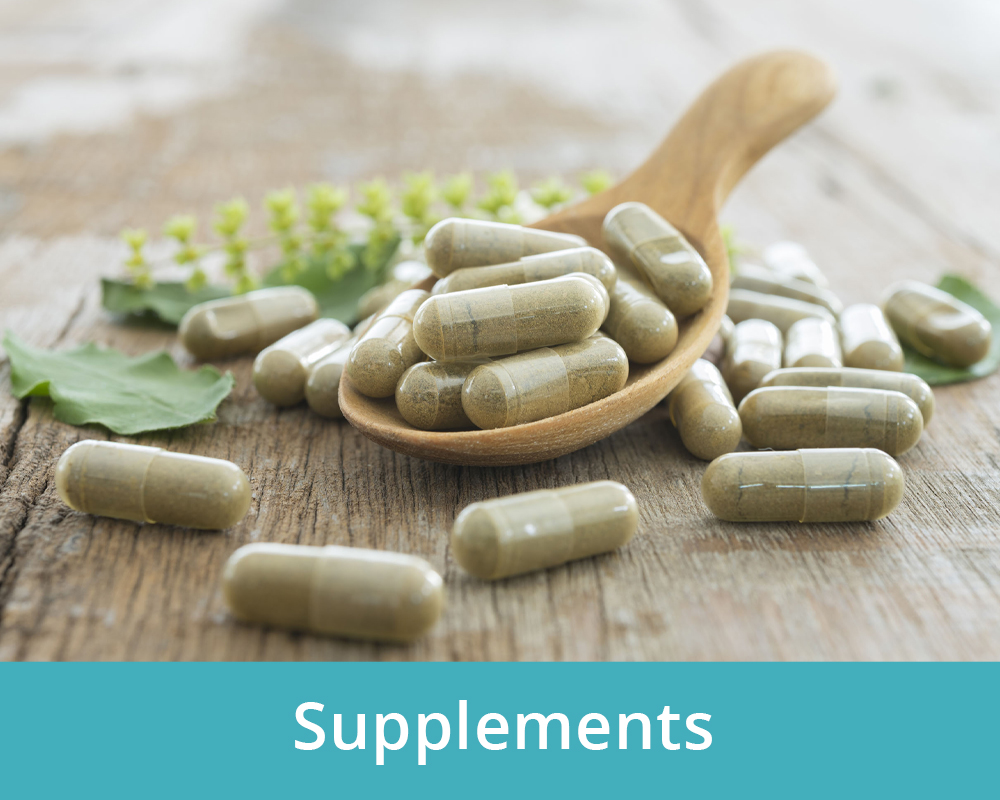
Defining Menopause and Perimenopause
Menopause is officially marked by 12 consecutive months without a menstrual period. This is where estrogen and progesterone production dramatically decreases. Perimenopause is the 7–10 years leading up to menopause, in what can often feels like the “zone of chaos”. This is where woman experience the unpredictable hormone cycles which trigger symptoms such as hot flashes, irregular bleeding, mood swings, frozen shoulders, poor memory, difficulty sleeping and cognitive fog.
Biological and Mental Health Ramifications
As estrogen dips, inflammation increases—leading to higher risks of cardiovascular disease, osteoporosis, arthritis, mood disorders and visceral fat gain. During perimenopause the risk of mood disorders such as anxiety and depression sigificantly increases by around 40% due to hormone-sensitive neurotransmitter disruptions.
Core Symptoms and Health Changes during Perimenopause
- Vasomotor Disturbances: Hot flashes and night sweats are classic: sudden warmth followed by sweating due to dysregulated temperature control.
- Cognitive Dysfunction: “Brain fog”—memory lapses, decision-making difficulties, and focus problems—are common complaints.
- Sleep Disturbances: Hormonal fluctuations lead to insomnia and disturbed sleep, which compound fatigue and mood symptoms as well as cravings and poor food choices.
- Weight and Metabolism: Women in menopause experience body compositional shifts: muscle loss combined with visceral fat gain (rising from ~8% to ~23% body fat in studies) even without lifestyle change. It’s not just weight gain—it’s the location of fat storage that increases metabolic risk.
- Bone & Musculoskeletal Decline: The drop in estrogen accelerates bone thinning and contributes to joint pain, stiffness, and conditions like “frozen shoulder”.
- Metabolic Syndrome & Insulin Resistance: Insulin sensitivity worsens after menopause—raising the risk for metabolic syndrome, type 2 diabetes, and related conditions
Diet and Nutrition: The Anti-Inflammatory Foundation
Woman even those that are fit and health conscious are now finding the things that they were doing before are now no longer working even with increased workouts and reduced caloric intake the weight isn’t budging. Instead, the love handles and muffin top seems to be growing. It can be extremely frustrating and demoralizing. But with those hormonal shifts there also needs to come dietary and exercise shifts to accommodate your new body chemistry.
There are a number of diets that can help with Menopause. These include:
- The Galveston Diet by Dr Mary Claire Haver
- Metabolic Balance Program
- Anti-inflammatory Diet
- Mediterranean Diet
The top two that we will discuss are the Galveston Diet and the Metabolic Balance Program.
The Galveston Diet
Dr. Mary Claire Haver, a board-certified OB-GYN and menopause specialist, developed the Galveston Diet specifically to address the unique metabolic and hormonal challenges women face during perimenopause and menopause. Unlike traditional calorie-restriction diets, the Galveston Diet emphasizes anti-inflammatory nutrition, intermittent fasting, and balanced macronutrient intake, particularly focusing on healthy fats and fiber while reducing refined carbohydrates. Dr. Haver designed the program to counteract common menopausal symptoms such as weight gain, fatigue, and brain fog, which are often linked to hormonal shifts—especially the decline in estrogen. Estrogen plays a vital role in regulating metabolism, insulin sensitivity, and fat distribution, and its loss during menopause often leads to visceral fat accumulation and systemic inflammation (1,2) Lovejoy et al., 2008; Carr, 2003).
One core principle of the Galveston Diet is reducing inflammation through diet. Dr. Haver advocates for a Mediterranean-style eating pattern—rich in omega-3 fatty acids (e.g., from fatty fish, nuts), polyphenols (from berries, olive oil, leafy greens), and whole foods—while eliminating processed and high-sugar items. It focus’ on adequate protein (50–120 g/day depending on lean mass) to maintain muscle and metabolic health and high fiber intake (≥25–32 g/day) to support gut health, improve glycemic control, and reduce visceral fat.
Scientific studies support this anti-inflammatory approach. For example, a Mediterranean diet has been associated with reduced levels of C-reactive protein (CRP) and interleukin-6 (IL-6), two markers of systemic inflammation often elevated during menopause (3). Additionally, menopause-related weight gain has been shown to correlate with increased insulin resistance and chronic inflammation, which can further elevate risks for cardiovascular disease and type 2 diabetes (4). The Galveston Diet’s anti-inflammatory focus may help mitigate these risks.
Another key element of the Galveston Diet is intermittent fasting (IF), particularly the 16:8 method—16 hours of fasting followed by an 8-hour eating window. Research shows that intermittent fasting may improve insulin sensitivity, reduce oxidative stress, and enhance fat metabolism, all of which are particularly beneficial for midlife women experiencing metabolic slowdowns (5). By aligning eating patterns with the body’s circadian rhythms, IF may also improve sleep and energy levels, both commonly disrupted during menopause. There is some controversy on IF with menopausal woman (as it may not work well with everyone). Long-term studies on intermittent fasting in menopausal women are still emerging, initial findings are promising and align with the results Dr. Haver has reported in her clinical observations and patient feedback.
The Metabolic Balance Program
Metabolic Balance®, is a personalized nutrition program developed in Germany in 2001, resets metabolism through individualized meal plans based on 36 blood markers and personal data (e.g., age, medical history, food preferences). This program is base don reducing inflammation and lowering insulin to get into fat burning mode.
Clinical trials—including a long-term study by the Albert Ludwig University of Freiburg’s Medical Center published in the Journal of Nutrition and Metabolism—show that participants lost and maintained significant weight (62.5% lost ≥5%, with 31.1% losing ≥10% of initial weight) for over a year; improvements in blood biomarkers such as cholesterol and insulin and quality-of-life measures were also identified (6). The approach emphasizes real food, no packaged products, and supports metabolic health by regulating insulin and inflammation—a key advantage during menopause when energy expenditure drops and visceral fat increases.
For menopausal women in particular, Metabolic Balance® offers tailored nutrition that directly addresses hormonal and metabolic shifts characteristic of this life stage and for the individual person as no 2 plans are the same. Hormonal decline during menopause often leads to increased abdominal fat, insulin resistance, elevated cholesterol, and blood pressure—all components of metabolic syndrome. (7,8)
By formulating individualized plans that balance macronutrients, emphasize fiber-rich whole foods, and stabilize blood sugar, the program mitigates these risks. Anecdotal reports and clinician feedback in Germany indicate up to 70% of menopausal participants reduce or eliminate medications as their symptoms (e.g., hot flashes, fatigue, low libido) improve through dietary change alone. This evidence-backed, hormone-sensitive method makes Metabolic Balance® a powerful tool for women seeking metabolic and symptom relief during menopause.
If you want to find out more please click here or book with one of our metabolic balance coaches for a free discovery call to find out more and see if this is the right fit for you.
Best Exercise for Perimenopause and Menopause Woman
Despite your best efforts to reduce calories, implement extra workouts and avoiding junk food that weight just keeps piling on! But you might find that it is not just how often or how long you work out but also the type of exercise that you do that needs to change, so switching your workouts might be just the thing.
Resistance Training & Strength-Building
Weightlifting, bodyweight training, and using weighted vests—even during daily chores is highly recommended to preserve lean muscle and bone density, which for menopause woman becomes much harder as their estrogen and testosterone start to drop and insulin and inflammation starts to climb.
Cardiovascular and Zone-2 Exercise
Zone 2 training is a type of cardiovascular exercise performed at a specific heart rate intensity that primarily targets your aerobic system—where your body efficiently burns fat for fuel. It’s often referred to as the “fat-burning zone” or the “aerobic base” zone.
Zone-2 training supports mitochondrial health and cardiovascular resilience—a key pillar of her holistic approach. Zone 2 is for building health span—not just lifespan. In menopause, where inflammation, insulin resistance, and fatigue can increase, zone 2 training offers a low-stress, high-impact strategy for staying metabolically fit and energized.
Definition of Zone 2
Zone 2 corresponds to about 60–70% of your maximum heart rate (MHR). At this intensity:
- Your breathing is elevated but you can still hold a conversation (also called the “talk test”).
- You primarily use fat as a fuel source, not glycogen (sugar).
- You increase mitochondrial density and efficiency, improving endurance and metabolic health.
- Duration: 30–90 minutes for optimal benefit, though 20 mins is a good start.
Why Zone 2 Training Matters—Especially in Midlife & Menopause
- Zone 2 training supports metabolic flexibility (switching between fat and sugar for energy).
- It improves insulin sensitivity and reduces the risk of type 2 diabetes.
- It supports mitochondrial health, crucial for energy, longevity, and reducing fatigue.
- It may help reduce visceral fat, the dangerous fat around organs that often increases during menopause.
- It enhances recovery and reduces chronic stress load compared to high-intensity training.
How to Calculate Your Zone 2 Heart Rate
A general formula:
Zone 2 HR = (220 – your age) × 0.6 to 0.7
So, if you’re 50:
MHR = 220 – 50 = 170
Zone 2 = 102 to 119 bpm
Alternatively, for a more accurate method, especially for trained individuals, many use lactate threshold tests or VO₂ max assessments through labs or wearables (like Garmin, Whoop, or Apple Watch with HR tracking).
What are the Best Zone 2 Activities to do for Menopause
- Brisk walking
- Light jogging
- Cycling at a moderate pace
- Rowing machine at a steady pace
- Hiking on flat terrain
- Swimming laps at moderate pace
How Zone 2 Training Differs from Other Zones
| Zone | % Max HR | Fuel Source | Benefit |
| 1 | 50–60% | Fat | Recovery, low intensity |
| 🟢2 | 60–70% | Mostly fat | Aerobic capacity, fat-burning |
| 3 | 70–80% | Fat & carbs | Higher endurance, some stress load |
| 4 | 80–90% | Mostly carbs | Anaerobic, lactate tolerance |
| 5 | 90–100% | Carbs (glycogen) | Peak power, VO₂ max, short bursts |
What are the Worst Exercises for Perimenopause and Menopause woman
High intensity training
- Increases cortisol, which can worsen belly fat and sleep problems.
- Can deplete progesterone and DHEA when stress is high.
- Promotes muscle loss if not balanced with strength training and proper recovery.
Note: Overtraining is a common cause of persistent fatigue and plateaued weight loss in menopausal women.
Long Distance Running
- Promotes oxidative stress and inflammation.
- Can worsen joint pain, pelvic floor strain, and bone loss if not paired with resistance work.
- Not effective for preserving muscle mass.
Conclusion
Menopause isn’t a sentence to sleepless nights, pain, muffin tops and mood swings —it’s a transition with choices. Menopause is a complex biological transition with widespread effects on women’s bodies and lives. A multi-dimensional approach centered on evidence-based hormone therapy, a nutrient-dense anti-inflammatory diet, appropriate movement/exercise, and mind-body approaches are all key in helping woman navigate this and enable them to live the second half of their life being healthier, richer, and more vibrant than ever before.
References:
- Lovejoy, J. C., Champagne, C. M., de Jonge, L., Xie, H., & Smith, S. R. (2008). Increased visceral fat and decreased energy expenditure during the menopausal transition. International Journal of Obesity, 32(6), 949–958. https://doi.org/10.1038/ijo.2008.25
- Carr, M. C. (2003). The emergence of the metabolic syndrome with menopause. The Journal of Clinical Endocrinology & Metabolism, 88(6), 2404–2411. https://doi.org/10.1210/jc.2003-030242
- Fung, T. T., McCullough, M. L., Newby, P. K., Manson, J. E., Meigs, J. B., Rifai, N., … & Hu, F. B. (2005). Diet-quality scores and plasma concentrations of markers of inflammation and endothelial dysfunction. The American Journal of Clinical Nutrition, 82(1), 163–173. https://doi.org/10.1093/ajcn.82.1.163
- Matthews, K. A., Crawford, S. L., Chae, C. U., Everson-Rose, S. A., Sowers, M. F., Sternfeld, B., & Sutton-Tyrrell, K. (2009). Are changes in cardiovascular disease risk factors in midlife women due to chronological aging or to the menopausal transition? Journal of the American College of Cardiology, 54(25), 2366–2373. https://doi.org/10.1016/j.jacc.2009.10.009
- Anton, S. D., Moehl, K., Donahoo, W. T., Marosi, K., Lee, S. A., Mainous, A. G., … & Mattson, M. P. (2018). Flipping the metabolic switch: Understanding and applying the health benefits of fasting. Obesity, 26(2), 254–268. https://doi.org/10.1002/oby.22065
- Meffert, Cornelia; Gerdes, Nikolaus: Program Adherence and Effectiveness of a Commercial Nutrition Program: The Metabolic Balance Study. Journal of Nutrition and Metabolism, Volume 2010 (2010), Article ID 197656; (http://www.hindawi.com/journals/jnume/2010/197656.html)
- P. R. Thomas, Ed., Committee to Develop Criteria for Evaluating the Outcomes of Approaches to Prevent and Treat Obesity and Institute of Medicine: Weighing the Options: Criteria for Evaluating Weight-Management Programs, National Academies Press, Washington, DC, USA, 1995
- Hauner H, Wechsler JG, Kluthe R et al: Qualitätskriterien für ambulante Adipositasprogramme [Quality criteria for outpatient obesity programs], Akt. Ernaehr. Med. 25 (2000), 163-165





